Companions provide more perspectives in stories, ground the narrative in people a player can relate to, and shine a light on parts of the world and lore that may not be in the direct path of the player. Obsidian has always had a talent for creating memorable companions, and Avowed continues this approach.
Game Rant spoke with Avowed’s director Carrie Patel; narrative designers Paul Kirsch, Jay Turner, and Katie Tenney; lead area designer James Agay, QA engineer Lindsay Pimintel; and QA analyst Claire Nentarz about companions in the game.
Meeting Avowed’s Cast
Q: What was the overarching goal and philosophy of Avowed’s companions from a top-down perspective? What do they add to a player’s perspective?
Kirsch: Companions wear a lot of hats. We typically want them to highlight something about the setting and/or speak for a culture or ideology, so the player has a well-rounded point of view about the sorts of choices they’ll be making and the people impacted. Beyond that very practical need, companions are also unique individuals–the protagonists of their own story with wants and needs that may diverge from the player’s immediate goals. Having companions around makes the game more interesting, more flavorful, more sassy, and at times more confrontational. They give the player a reason to care about what they’re doing.
Q: Kai was reportedly the first companion written. Can you talk a little bit about the writing process for each character and what their initial idea was?
Patel: It was important to showcase a range of species, cultures, and party roles in our companions, so Kai was always a Rauataian ex-mercenary with a checkered past and some hidden warmth. Lucien Soulban expanded on his documentation early in the project and planted the seeds of heartache and regret that developed into his personal quest. I wanted to make sure that his backstory and his life outside the player’s party informed his character and developed his investment in his adventure with the player. His affability and humor emerged in the writing as both a means to make him good company for players (particularly in the early game, when he’s an early and consistent presence) and as a means to mask his vulnerabilities. Brandon Keener did an incredible job bringing Kai to life, not only in the moments of soldierly camaraderie (which longtime RPG players may also recognize from his performance as Garrus Vakarian), but also in his rawest moments of regret.
Turner: Marius was initially imagined as a hunter/warden character with rogue abilities, and that was it. We built upon that, imagining a character who is the absolute best at what he does, but is also a little uncomfortable working outside his wheelhouse. He became a character whose line of work took him outside of society, and eventually he came to feel most comfortable away from other people. Marius’ character arc is a very personal one for me, and I hope players find him as interesting and complicated as I have.
Kirsch: When I started writing Giatta, the only firm details were her culture of origin, her occupation as an animancer, and her support role in combat. Otherwise, I had a great deal of creative freedom to figure out her backstory and emotional arc. Animancers are scientists of the soul, so I imagined her venturing out and studying the plague that besets the Living Lands but also eyeballing the player’s curious nature and wanting to know more about them. I like when companions have a story that runs parallel to the player’s, so it was important to me that Giatta’s goals were similar, albeit driven by a personal crusade.
Tenney: Yatzli’s role as the Godless expert was set from the beginning. The driving goal behind her was to not make her just a bland, boring academic. Her initial moodboard had images of Indiana Jones and Harley Quinn among others, trying to find a different and good vibe for her. We even had pictures of Anjali Bhimani, Yatzli’s eventual voice actor, in there! Then, as the development went on and Yatzli became more involved with Giatta and Fior mes Iverno, she really became the character she is now.
When I took over her writing, I got handed a fun character that I already loved, and I got to lean into the parts I liked most: her fun and flirty nature; her loving relationship with her partner; and the idea of the parts of ourselves we leave behind due to life passing us by. I personally went to college late and have always had a soft spot for characters who are still unsure even into their later years, and I hope folks enjoy helping Yatzli figure some stuff out!
Q: How did these companions change throughout development? Who changed most from their original concept and how?
Turner: I’d say Kai changed the most over time, being one of the first companion designs and the first companion the player meets. His personality seemed to get bigger, kinder, and more complicated over time, from his early days as The Tank to his current role as the player’s brother-in-arms.
Marius’ character, role in the plot, and personal storyline were all locked down early in the process, but he gained depth over the course of being written. As the other companions came online, we got together and imagined how they’d react to each other, what they cared about, and so on. My main concern was having Marius be a deadpan smartass without being unlikeable, and that became a lot easier once the other companions were in the mix.
Tenney: Yatzli was lucky enough to be a very strong character from the start. Her personality was always set, but her role in the story shifted over time. Her own personal story was always linked with the Godless, but her adventures outside of her personal story went through some changes.
Kirsch: At some point I realized Giatta was approaching everything a little too clinically, so I made her spicier and more defiant to authority–which fit nicely into her introduction. Another thing I explored was the unhappy fate of her parents. They died in a lab accident, so Giatta feels this obligation to finish their work and redeem their mistakes. That aspect of her character grew more and more important over time. Even if Giatta isn’t bringing it up, the trauma and her feelings of inadequacy are ever-present.
Q: How do the companions feel about each other? I feel like Marius and Yatzli, based on what I’ve seen so far, are like fire and ice in terms of personality.
Turner: Marius has no idea how to handle Yatzli. She’s curious, nosy, inappropriate, and quick-witted, whereas he’d rather be left alone. If you listen to them banter in camp, however, you might find a curious friendship between them (and some fun interactions).
Marius and Kai are old “buddies,” having worked together before in Marius’ work as a wilderness guide. Marius wouldn’t admit it out loud, but he has a lot of respect for Kai, even if the aumaua soldier can be a bit talky and overly curious from time to time.
Marius and Giatta have a sort of distant respect. Marius has no idea what to make of souls or animancy or any of that, but he knows Giatta’s a whiz with that stuff, and that’s all he needs (or cares) to know. Giatta can tell that Marius has some old wounds she can maybe help him with, but she respects him enough not to pry further than he’d like.
Tenney: Yatzli likes to poke at Marius. Like a platonic version of teasing a classmate you have a crush on. She can see that there’s more to him and is showing her support in a roundabout way.
Yatzli and Kai both handle issues similarly, and it leads to a relationship where they get along but also push each other’s buttons very easily.
Yatzli and Giatta have known each other for years before the Envoy ever enters the picture. Yatzli’s kind of like Giatta’s fun aunt.
Kirsch: Giatta is concerned about Marius. She sees in him a vibrant soul weighed down by old scars, so she tries to nudge him to experience life to its fullest. She looks to Kai for his worldly knowledge of distant places, though she’s happy to call him out when they disagree about politics, or smirk when he gets squeamish about her ghost stories. And she’s especially close to Yatzli, both as dear friends and as intellectual sparring partners. Their campfire banters explore some of Eora’s oldest mysteries.
Q: If Kai is the companion who’d win “most likely to have a beer with,” what contests would the other characters easily win?
Turner: Marius would win “Most likely to give you the cold shoulder after you stole his digestive cheese.”
Tenney: Yatzli took home the “Most likely to do the Ken pose in her mugshot” trophy.
Kirsch: Giatta would win whatever award they give students at Debate Club, but then she would take the trophy back to her empty house and wonder who she was trying to impress. Or maybe melt it down for the metal.
Q: When it comes to companion questlines, can you talk a little bit about their personal quests? How long are they, if they are symmetrical or asymmetrical in design, and if/how they are tied into the main storyline?
Turner: I’d say that each companion’s personal storyline weaves directly into the main plot, to the extent that in most cases, the critical path is their personal quest. Some of them have a little bit of extra content to tie up their personal development, but generally, the companions are all there because they care deeply about the Envoy’s quest.
Kirsch: I had a hand in designing the main quest for Emerald Stair, and one of my priorities was to make Giatta’s recruitment a point of focus. So the story of Emerald Stair and Giatta’s introduction are intrinsically linked. It was also an opportunity to learn about Giatta from a few different angles before she gets added to the party. I could say more, but not without spoilers…
Tenney: Without giving too much away, when the plot of one of Avowed’s regions was first being designed, we realized that Yatzli would absolutely be a part of that story. So similarly to Giatta, her recruitment and story are weaved through the critical path.
Looking into Each Companion
Q: One of Giatta’s core character elements is a scientist. Could you talk a little bit about having science, and specifically a scientist, in a fantasy world? What are the challenges associated with that approach?
Kirsch: I like to think of animancy as science in a world that hasn’t quite figured out the scientific method yet and hasn’t detached the physical world from the spiritual. Since animancy is the study of souls, it’s less about balancing equations and more about the highly theoretical collision of worldly research, otherworldly mysticism, and philosophy. Animancers throw ideas at the wall and see what sticks, often to their peril. They also have a competitive streak, so they don’t always share their learnings. When the player meets Giatta, she’s been trying to keep her colleagues together and focused on a common goal, but bureaucracy and differing opinions get in the way. She hasn’t yet mastered working within established limitations, so her version of science is a complicated mixture of personal and community goals.
One of my creative challenges was dealing with the multitude of characters who are justifiably distrustful–or outright antagonistic–toward animancy. There’s an expectation that if someone starts badmouthing Giatta’s work then she’ll be there to breathlessly defend it and try, perhaps in vain, to earn the player’s sympathy, confidence, and trust
Q: Please correct me if I am wrong, but Kai feels like an “anchor companion,” the companion to mostly introduce the player to the world of the Living Lands and ease them into the world. Does that seem accurate? If so, could you talk about how that works and the importance of “anchor companions” in a companion-based RPG?
Patel: That’s a fair assessment! With any companion roster, you want a reasonable variety of outlooks, personalities, and skillsets without pushing any one character so far that they feel like they belong in a different game entirely. Anchor companions help with introducing players to the world and investing them in the story, and while they seem like the most normcore, there’s a lot of balance that goes into pulling them off: they need to be relatable but not bland, agreeable without becoming the player’s “yes man,” and humorous without trivializing the stakes of the world. And, as with any good RPG companion, you can peel back their layers over time. Some of my favorite moments to write are the ones where the player can find the limits to Kai’s affability and the seeming contradictions in his worldview. It’s moments where a character breaks out of their type—when the easygoing bro draws a line in the sand, when you hit a raw nerve with the party jokester—that they become so much more than their roles and archetypes.
Q: Marius seems like a very independent, lone-wolf survivor type. I was curious if you could talk about how that ties into his character, his overall storytelling, and joining a party in a companion-based RPG?
Turner: Marius is a loner for many reasons, some of which you’ll find out by spending time with him, but the saying is, “No man is an island,” and that goes for Marius as well. He utilizes his survival skills as a guide in the Living Lands, priding himself on his ability to keep less prepared people alive in the hostile regions of the island. The Envoy comes to Marius seeking his expertise, and it is initially a matter of Marius’ professional pride to guide the Envoy through this unfamiliar land.
In the party, Marius is an outside voice, often dryly commenting on things he thinks are unnecessary for survival (he’ll advise the Envoy to stop diving into dark dungeons where they’ll get themselves killed!) or offering an outsider’s perspective to social situations where the practical solution isn’t necessarily the best one. Among the companions, Marius can be slow to trust and quick to close himself off, but like many people, once he finds “his people” they become family.
Q: Orlans are one of Eora’s unique races. Can you discuss the process of translating Orlans, and specifically Yatzli, into a completely different type of game from Pillars of Eternity?
Tenney: It’s interesting because you only see orlans in Pillars of Eternity and Deadfire as tiny isometric models and painted portraits. In Avowed, orlans had to be translated into a first-person game and that process of translation wasn’t always perfect. The first batch of orlans had to be reworked because a lot of the devs were genuinely scared by their looks. They’re in a great place now, though. These days, a few of the team’s more beloved characters are orlans – like Yatzli and Garryck.
In the previous games, we’ve had orlan companions who were risqué and flirty, so Yatzli isn’t treading new ground there. She’s just taking it up a notch. One of the best things about the Pillars universe is that a lot of the characters are very human: even with elf ears or blue scales, they’re very human to their core.
Q: Can you talk a little bit about the design of the party camp, how it accommodates these companions, and the overall purposes it serves?
Kirsch: Party camp is the venue where companions do most of their debriefing after impactful quest decisions, major revelations, world state changes, or advancements in their personal story. It’s a safe zone where everyone can decompress and talk about what just happened, speculate about the consequences, and (of course) gossip. Since party camp is where crafting / cooking / weapon upgrades are accessed, players will find themselves visiting it frequently, and more often than not at least one companion will have something to say.
I would be remiss if I didn’t shine a spotlight on Giatta’s voice actor Mara Junot and director Katelyn Gault, who were incredible partners in figuring out her character. They found subtext in her that I did not consciously consider and were instrumental in giving her life.
Q: Can you discuss the unique companion skills? What role does each companion serve combat-wise?
Agay: Kai’s main job is getting hit, so you don’t have to–his core skill is not getting killed. For that he has a passive you can unlock called Second Wind that revives him back to half health if he goes down. You can upgrade this in various ways. He also has an active skill called Fire and Ire that serves as a taunt and stun, and putting points into it adds a fire component. He’s also useful exploring the world because of his Firestarter ability that you can use to burn down obstructions. You’re not stuck with him for that though, you could always just use fire magic, a flaming sword, or just carry some Magran’s Fury (A volatile fruit that is functionally a gelatinous sack of flammable liquid).
Giatta is an animancer, her primary combat role is support. She can heal the party, shield them with magical barriers, buff their speed, and do some passive healing along with her damage output. This really makes her crazy powerful, but at the cost of less total damage out from the group. Giatta can also cast a Spectral Jolt to activate Essence Generators around the world, which is handy if the player hasn’t pursued their own magic in that direction.
Yatzli is my personal favorite, as she packs a lot of personality and a big magical punch. Basically, she’s gone all the way down the wizard tree. She lobs massive explosions, dispels illusions, launches volleys of missiles, and can stun, slow, and freeze enemies. She can’t take too many hits, but she has a lot of attitude so I always pick her.
Marius is a hunter and tracker. When exploring the world, he will help you find useful items and plants. In combat, he does ranged damage with his bow, paired with magic to root enemies in place, make enemies more susceptible to damage, slow enemies, and maim them (reducing their ability to do damage). He can also learn Shadow Step, an ability that allows him to vanish in a smoke cloud and reappear near an enemy, daggers out. This can be further modified to synergize with some player skills. For example, Assassinate turns Shadow Step into a one hit kill versus most stunned opponents.
Preparing for Avowed’s Release
Q: How does Avowed approach introducing newcomers but also making sure veterans feel like this is the same world as Pillars of Eternity? Should players check out Pillars of Eternity first to understand the world, even though the story is largely disconnected?
Patel: Both the lore and tone of the Pillars games are distinct—there’s a blend of realpolitik and metaphysical mystery that makes the world feel both lived-in and ripe for exploration. While Avowed makes references to the events of the Pillars games, the story takes place in the Living Lands, and factions and characters like animancers, the Aedyran Empire, and Inquisitor Lödwyn of the Steel Garrote play a unique role that will be fresh for all of our players. Veterans will recognize the references, but newcomers won’t feel like they’re missing any required reading. Plus, we have a lore glossary that players can activate during dialogue for more context. Nevertheless, players who enjoy tactical gameplay and want an introduction to the world should absolutely try Pillars of Eternity—they are beautiful, rich games that we’ve continued to support over the years.
Q: In general playtests, do you have any fun stories you could share among playtesters or devs?
Pimintel: The most memorable playtests are the ones where the player does something to break the game in an unexpected way. In one dungeon, there is a ghostly illusion of a character that speaks to you upon entering. I had a playtester that immediately shot her with a bow mid-sentence, sending her tumbling down into a chasm.
Nentarz: The first moment that comes to mind for me is watching playtester reactions to a key cutscene in Dawnshore. We’d have playtest sessions recorded through Teams meetings, and devs could pop in to watch the playtester whenever. Once playtesters got close to the cutscene, I’d ping a few people and say, “They’re about to get to the scene!” Every playtester was caught off guard and verbally expressed their surprise. Even the more quiet playtesters would say something along the lines of, “Wait, what? Am I just… dead?” Most playtesters said that this moment was when they became hooked on the story, and were keen on figuring out what happened to them. We adored seeing their reactions.
Q: Without going into spoilers, could you talk about your first and perhaps favorite characters you’ve played while working on the game? How did you roleplay these characters?
Pimintel: For my first full playtest, my envoy was a cranky old scholar named Petunia who could care less about companionship. Every interaction she had was a means to an end in her pursuit of arcane power. This was a strategic choice — I wanted to be a total jerk to everyone I met since most players tend to lean towards neutral or nice.
Nentarz: My most recent playthrough was with a character I spent waaaay too much time in character creator perfecting. She was stunning and I named her “melon.” Other runner up names were “Toyotathon” and “xbox360,” because I can’t take anything seriously. I don’t know if anyone’s familiar with the resurgence of bizarre wizard memes, but that was 100% her character. Faced with a problem? Fireball. An NPC questioning a series of events? Confuse the hell out of them with mystic ramblings. Ponder that orb.
Patel: Because it’s so common to play the good guy (whether you really want to or not), I love it when a game lets me play a bit of a villain. I played one of my first characters as a taciturn Aedyran loyalist. I was pleased by how consistently the game let me follow this characterization and by how much opportunity I had to define what these choices actually meant to my character.
Q: Can you discuss any launch day plans for Obsidian? After “pressing the button,” how is the team celebrating?
Patel: Launch day is always hugely exciting for the team. Most of us have worked on the game for years, so finally seeing our players enjoy it is an event. For most launches, we’ll meet in the main lounge in the office (and set up a call with our remote colleagues) and share a toast together. For the rest of the day, we’re following playthrough streams, reading reviews, and watching players get into the game while keeping a lookout for any bugs that need to be hotfixed. As much as players are excited to get their hands on the game, we are just as stoked to see them play!
Q: Is DLC on the table for Avowed? Is there any consideration for it, a wait-and-see approach, or just strictly off the table?
Patel: Right now, our full focus is on Avowed.
[END]
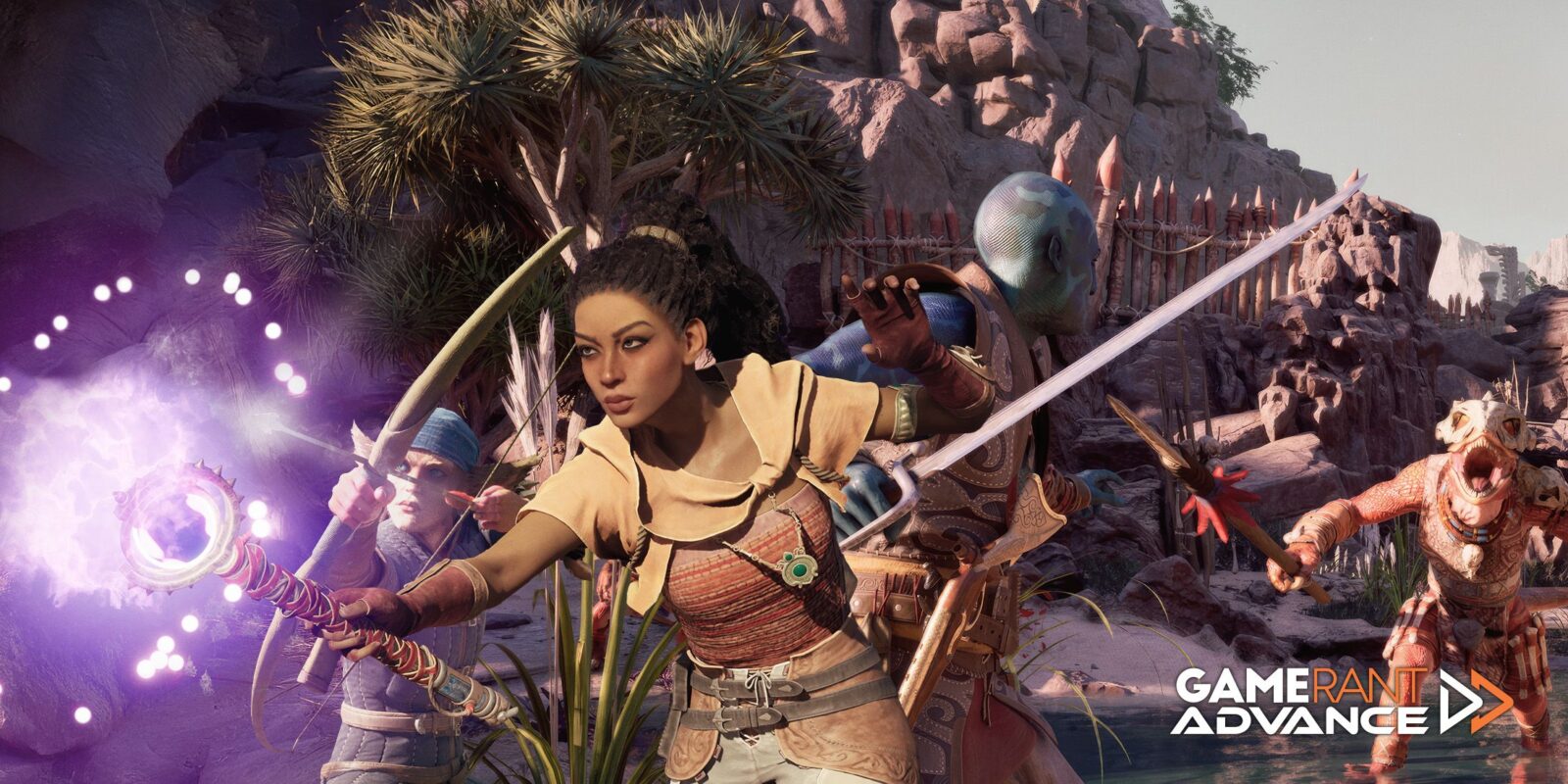
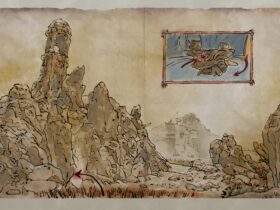
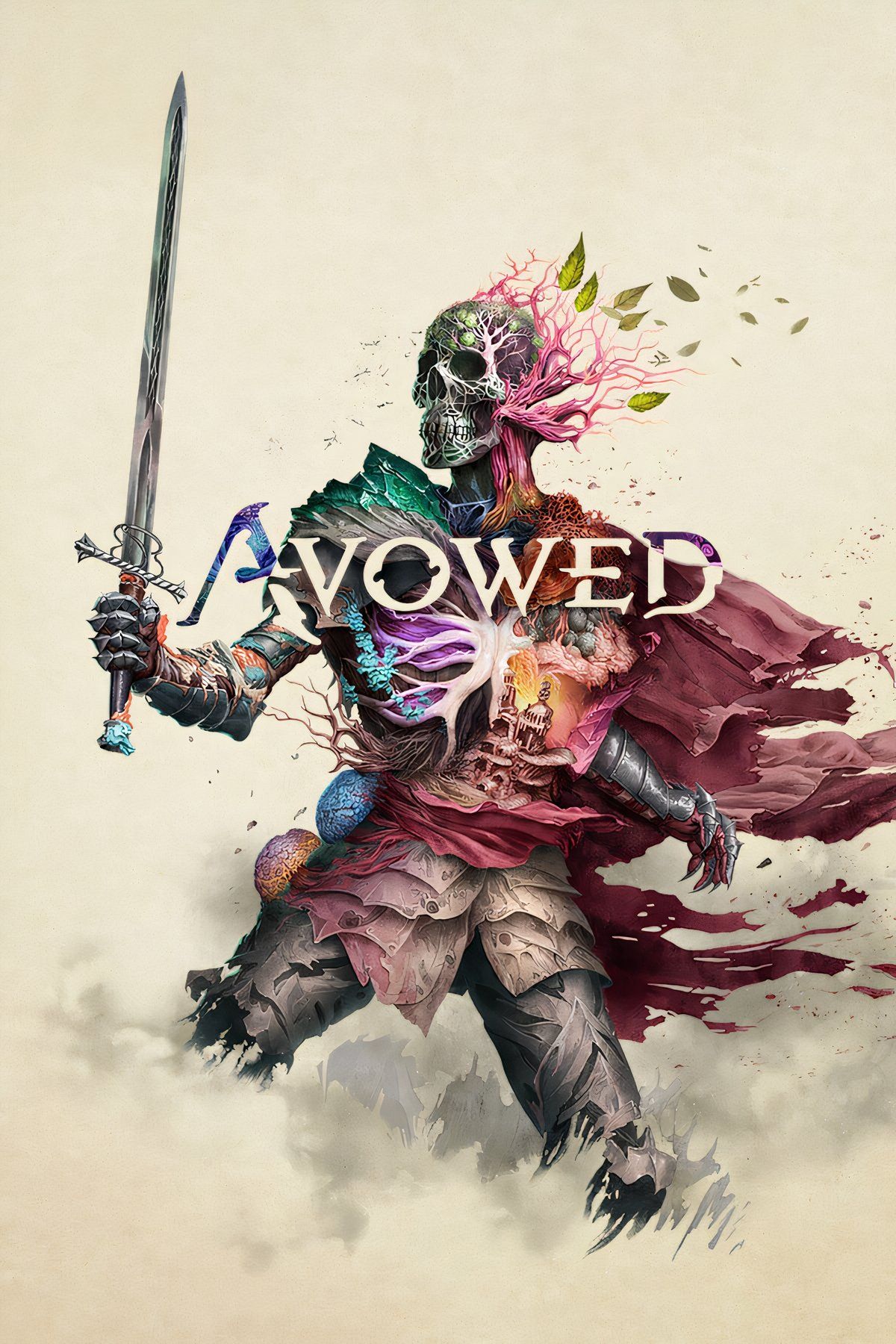

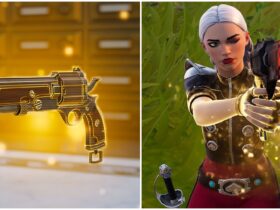
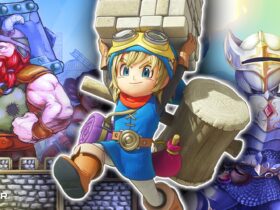
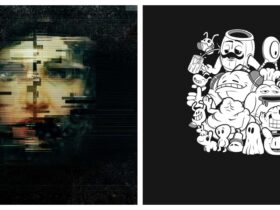
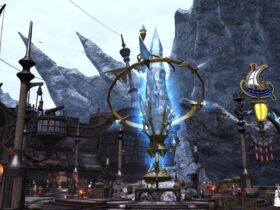


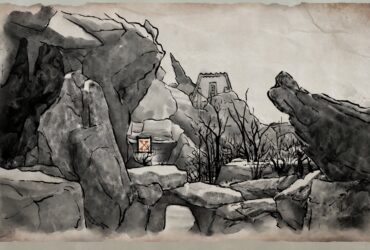


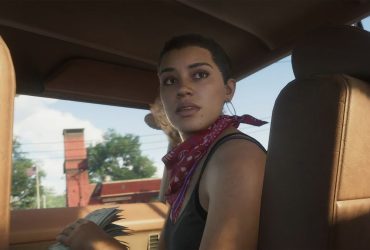
Leave a Reply